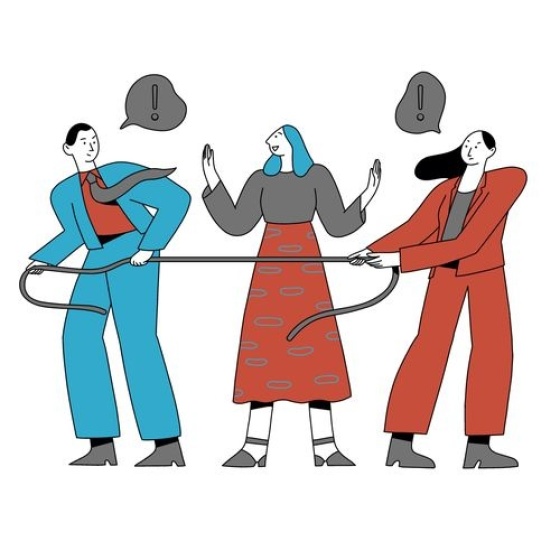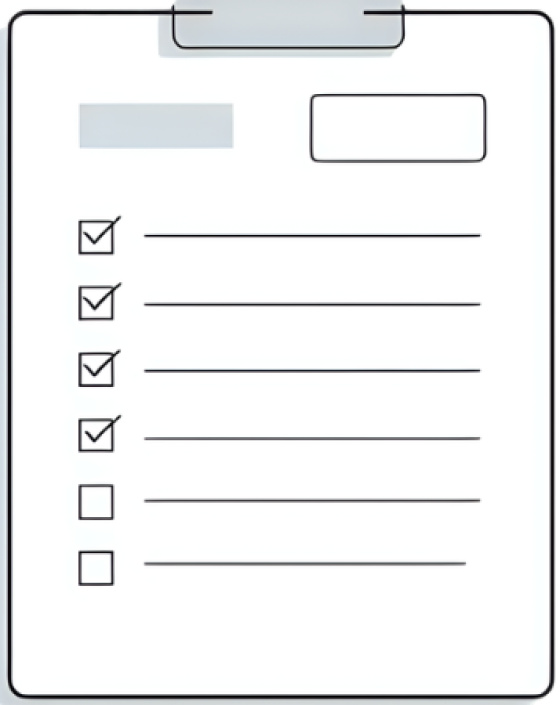How to manage a conflict within your team?

Conflicts within a work team are inevitable. However, if managed well, they can become opportunities for growth, innovation, and stronger team cohesion.
Whether it's differences of opinion, personality clashes, or disagreements over how to carry out a project, these frictions can have negative effects if not handled effectively. The goal of this article is to provide you with practical advice to identify, understand, and manage conflicts within a team, while adopting strategies that promote a healthy and productive work environment.
Identifying different types of conflicts
Relational conflicts
Often rooted in personality differences, ideals, or values, these are probably the most common. These disagreements typically stem from perceptions or misunderstandings regarding a team member’s intentions, behavior, or attitude. For example, an extroverted person may be perceived as overbearing by someone more introverted, which can create tension. Relational conflicts have a particularly negative impact on team member satisfaction and engagement. They often lead to a breakdown in communication, which worsens the situation and makes conflict resolution more difficult.
Task conflicts
Unlike relational conflicts, task conflicts involve disagreements over goals, methods, or strategies for completing a task. This type of conflict can actually be beneficial if handled constructively, as it can encourage critical thinking and innovation. However, if it becomes too intense or remains unresolved, it can slow down decision-making and reduce group efficiency.
Role conflicts
These arise when responsibilities and expectations within a team are poorly defined. A team member might feel overwhelmed by being assigned tasks outside their official role, or tension might arise when multiple people compete for the same responsibility. This lack of clarity can lead to frustration and resentment that disrupt the team dynamic.
Status conflicts
These conflicts generally stem from issues of power and recognition. They may occur when a team member feels their skills or contributions aren’t being acknowledged, or when the team’s hierarchy is called into question. According to Richard Hackman, an expert in organizational psychology, such conflicts can undermine motivation and create a climate of distrust within the team.
Tools and strategies for preventing and managing conflict
Recognize early warning signs
It's essential to identify the early signs of conflict before things escalate. Team members may show signs such as frequent disagreements, defensive behavior, passive-aggressive comments, or lack of communication. Spotting these early warning signals is key to intervening quickly and preventing the situation from deteriorating.
Foster a culture of open communication
Communication is at the heart of conflict management. It’s important to create an environment where team members feel safe expressing concerns and ideas without fear of retaliation. Promoting open and transparent communication helps reduce misunderstandings and encourages the quick resolution of tensions.
Create a team charter
Establishing a team charter at the beginning of a project or within a newly formed team can help clarify roles, expectations, and communication methods. This charter should include clear rules for conflict resolution, communication norms, and individual responsibilities. It helps prevent misunderstandings and creates a framework where team members are accountable for group dynamics.
Implement constructive feedback practices
Constructive feedback is a key tool for defusing tension. It involves delivering criticism in a way that is seen as an opportunity for growth, not a personal attack. For feedback to be effective and well-received, it should be specific, objective, and focused on observable behaviors rather than personal judgments. It’s also essential to tailor feedback to the individual’s personality and context. For example, some people respond better to a direct approach, while others prefer a softer, more empathetic tone. (For more information: HR Guide)
Show empathy and understanding
In conflict management, active listening and empathy are crucial. It’s not just about hearing what others are saying, but understanding their perspective and emotions. A leader or manager must remain neutral and avoid taking sides.
Use negotiation and mediation
When tensions are too high for a simple discussion to be effective, negotiation or mediation may be required. Negotiation allows parties to find common ground, while mediation involves a third party—often a manager or external facilitator—to help resolve the situation. Negotiation should focus on finding a win-win solution where both sides feel satisfied. This requires a collaborative, not competitive, approach, emphasizing shared interests over conflicting positions.
Provide clear solutions and follow-up
Once discussions have identified the root causes of the conflict and proposed solutions, it’s crucial to formalize an action plan with clear steps and defined responsibilities. Without follow-up, the same conflicts may reappear or unresolved tensions may emerge. Regular follow-up also shows that the situation is taken seriously and that long-term improvement is the goal.
Promote diversity and inclusion
While diverse teams may be more prone to disagreements due to varied perspectives and experiences, they tend to be more innovative and high-performing over time. Fostering an inclusive culture helps reduce the risk of conflicts related to differences in status, culture, or gender.
Organize conflict management training
Investing in conflict resolution training for both managers and employees can be an effective way to prevent unnecessary tension. These sessions can teach valuable communication, negotiation, and emotional regulation skills. A study conducted by the Society for Human Resource Management found that teams trained in conflict resolution are 29% more effective than those that are not.
Adopt a transformational leadership approach
This leadership style encourages managers to act as inspiring role models, promote innovation, and show empathy—factors that play a key role in reducing conflict. Transformational leaders cultivate a work environment where collaboration is encouraged, and disagreements are viewed as opportunities for improvement rather than obstacles.
Managing conflict is not an easy task, but it’s essential for ensuring team productivity, cohesion, and well-being. By understanding the different types of conflict, taking a proactive and empathetic approach, and encouraging open communication, it’s possible not only to defuse tensions but to transform them into opportunities for growth and collective improvement.
Questions? Looking for real estate coaching or training? Our team is here to help — let’s talk.
Click here to book an appointment





